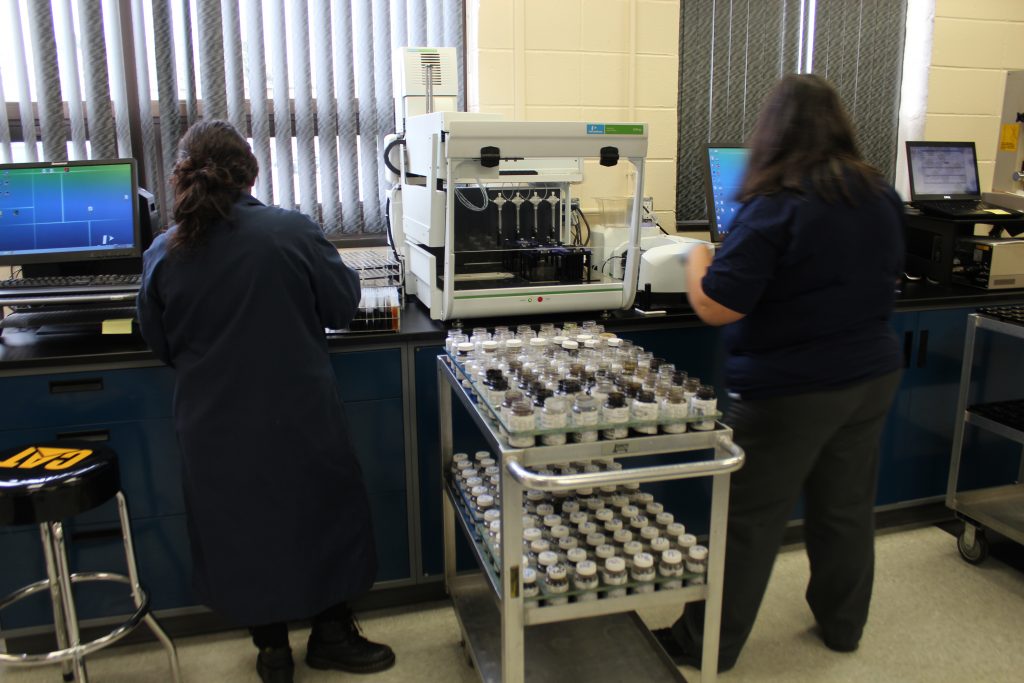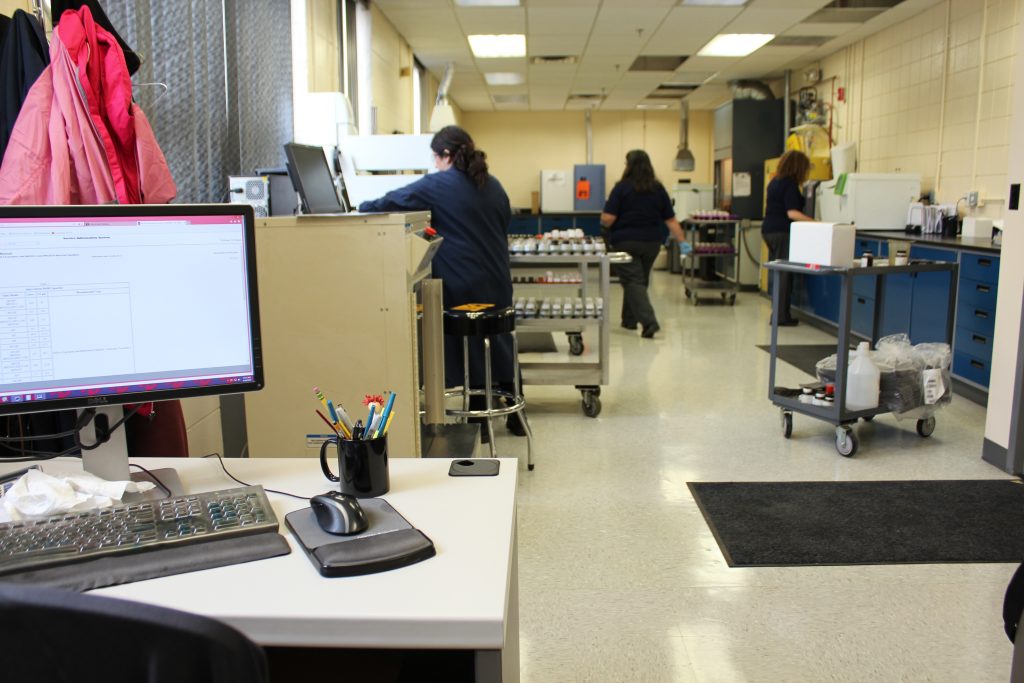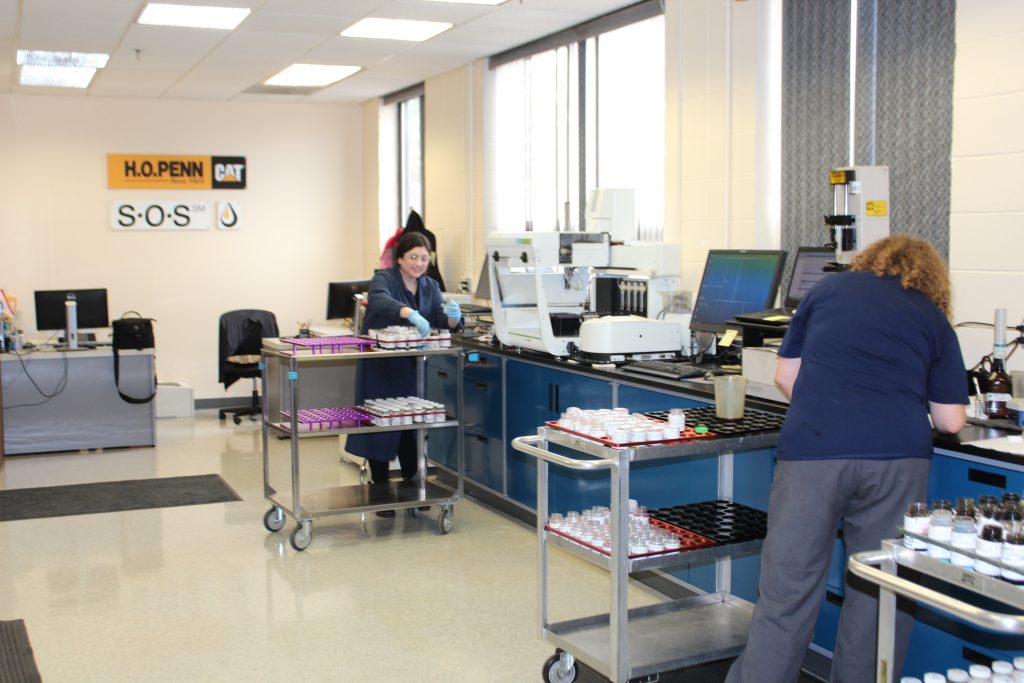For Registered Users, click here to Access our SOS Services Online Application
For New Users, click here to register.
Check out these helpful links to get started:
Using the Submit Page Using the Samples Page Using the Fleet Page
Our online sample database is available NOW and the way you access your sample reports has changed. The recommended browser to access your online samples is now Google Chrome or Firefox. Please register on our Dealer Storefront at www.hopenn.com to receive a log-in ID. If you already have an existing PartStore log-in ID, skip this step or you will be unable to log in! Please call our lab at 860-594-4860 to complete the activation process. Once activated, you can review your samples by selecting “SOS Services” below, and enter your log-in ID. You can then see all your new sample reports.
Our lab personnel are here to help with any questions you have about our new lab system and your sample reports. Please call Heather or Kelly at 860-594-4860.
Expanded Fluid Analysis Lab
We recently expanded the footprint of our Fluid Analysis Lab in Newington. This allows our top of the line team better space and more productive workflow. Know what’s going on with your machine or engine and prevent problems before they happen!
Check out the photos of our new lab:



Scheduled Oil Sampling
FLUID ANALYSIS BROCHURE Download PDF (1.3MB) (Open form in Adobe Acrobat)
Your Caterpillar equipment requirements and the operation of your business are constantly changing, and you need to monitor expenses and repair costs. You can’t afford a breakdown during operation. You must identify a problem before it happens so you can stay competitive in this business.
That’s where H.O. Penn can help. H.O. Penn has designed our Fluid Analysis Program with you in mind. It will help your keep your equipment operating properly so you can finish this job and get on to your next one.
At H.O. Penn, we check your oil and coolant for overall condition and signs of advanced wear. This shows when it is necessary to change your fluids or if a problem is developing. The results are obvious – avoid unscheduled downtime, prevent major repairs, reduced maintenance costs, and maximize drain intervals.
Remember, H.O. Penn is a Caterpillar dealer, and no one knows our equipment better than we do! If our H.O. Penn lab identifies a problem, we notify you immediately via email or telephone. We then give you repair options and recommendations to get you operational.
SAMPLING BENEFITS
At H.O. Penn, we will also connect you with our Genuine Cat Parts and Equipment Service departments, located throughout New York and Connecticut, who can provide all the assistance you need to keep working.
Let us help you with your fluid analysis needs!
- At H.O. Penn, we typically report results in less than 2 working days.
- H.O. Penn reports are useful and easy to understand. We give specific recommendations to solve problems, not just “empty numbers.”
- H.O. Penn uses the latest instrumentation, methods, and standards. Our lab exceeds Caterpillar requirements for quality interpretation, data management, and turnaround time.
- Have a mixed fleet? Don’t worry! We can analyze fluids from other manufacturers’ equipment in such industries as heavy construction equipment, trucking, industrial power systems, and marine power applications.
- At H.O. Penn, we analyze oils and coolants in-house and fuel samples via an independent lab.
Fluid analysis is a simple way to save money because it looks inside your engine without taking it apart. It is a proven maintenance tool that can increase your uptime and availability, along with your bottom line!
Here’s what you’ll get with H.O. Penn’s Oil Analysis:
- Twenty-two key element analyses—includes both wear metals and oil additives.
- The viscosity of all oils is tested.
- Check for outside contamination from water, diesel fuel, or antifreeze.
- Oil condition analysis (soot, oxidation, nitration, and sulfur products).
- Oil cleanliness analysis with Particle Count Technology on all non-engine components.
- Microscope analysis includes pictures of the particles found in the oil, where applicable.
- Over twenty-five years of Caterpillar’s oil analysis experience.
Level I Coolant Analysis Process
Nearly half of all engine failures are caused by poor cooling system maintenance. Here’s what our Level I Coolant Analysis will do for you:
- Diagnose the condition of the cooling system.
- Maintenance allows you to correct coolant or cooling system problems before costly failures occur. We verify glycol levels to prevent freezing or overheating.
- We measure nitrite levels for proper corrosion protection, and recommend if extender or SCA’s should be added.
- We evaluate the condition of the cooling system.
For more information about fluid analysis and how it will save you money, please call us at (860) 594-4860. We want to be your business partner!
 Dirt dumped in a hydraulic system This picture shows dirt that was dumped into a backhoe loader’s hydraulic system while it was parked on the side of the road. The pump failed shortly after this sample was taken. Magnification is 20X.
Dirt dumped in a hydraulic system This picture shows dirt that was dumped into a backhoe loader’s hydraulic system while it was parked on the side of the road. The pump failed shortly after this sample was taken. Magnification is 20X.
 This picture shows the damaging effects dirt can have in a transmission. This sample was taken after the transmission had failed. Note the amount of dirt and iron. Magnification is 20X.
This picture shows the damaging effects dirt can have in a transmission. This sample was taken after the transmission had failed. Note the amount of dirt and iron. Magnification is 20X.
 This smeared bearing was caused by oil that was diluted by diesel fuel. The thin oil was unable to maintain proper lubrication. A leaking fuel injector was found to be the source of the fuel.
This smeared bearing was caused by oil that was diluted by diesel fuel. The thin oil was unable to maintain proper lubrication. A leaking fuel injector was found to be the source of the fuel.
 This catastrophic failure was due to coolant leaking into the engine oil through a bad oil cooler. There was so much water in the oil that as it passed between the crankshaft and bearings, it “steam cleaned” the journal surfaces and seized the bearing to the crankshaft.
This catastrophic failure was due to coolant leaking into the engine oil through a bad oil cooler. There was so much water in the oil that as it passed between the crankshaft and bearings, it “steam cleaned” the journal surfaces and seized the bearing to the crankshaft.
 This liner became pitted because the coolant was not properly maintained. Conditioner was never added to the coolant and the liner was left unprotected. The result was an avoidable failure and unnecessary downtime.
This liner became pitted because the coolant was not properly maintained. Conditioner was never added to the coolant and the liner was left unprotected. The result was an avoidable failure and unnecessary downtime.
 This piston was the victim of extended oil drains. The oil became oxidized after being left in service too long and began to lose its ability to lubricate properly. You can see the smearing around the piston skirt and the carbon deposits near the piston crown.
This piston was the victim of extended oil drains. The oil became oxidized after being left in service too long and began to lose its ability to lubricate properly. You can see the smearing around the piston skirt and the carbon deposits near the piston crown.
Videos
How to Take a Good Oil Sample
Scheduled Oil Sampling Using a Vacuum Pump
Creating a Label from SOS Web with My.Cat.Com
NEW REPORTS FROM OUR SOS LAB LAUNCHING AFTER DECEMBER 10th
Click the video below to see our new Fluid Analysis report format
